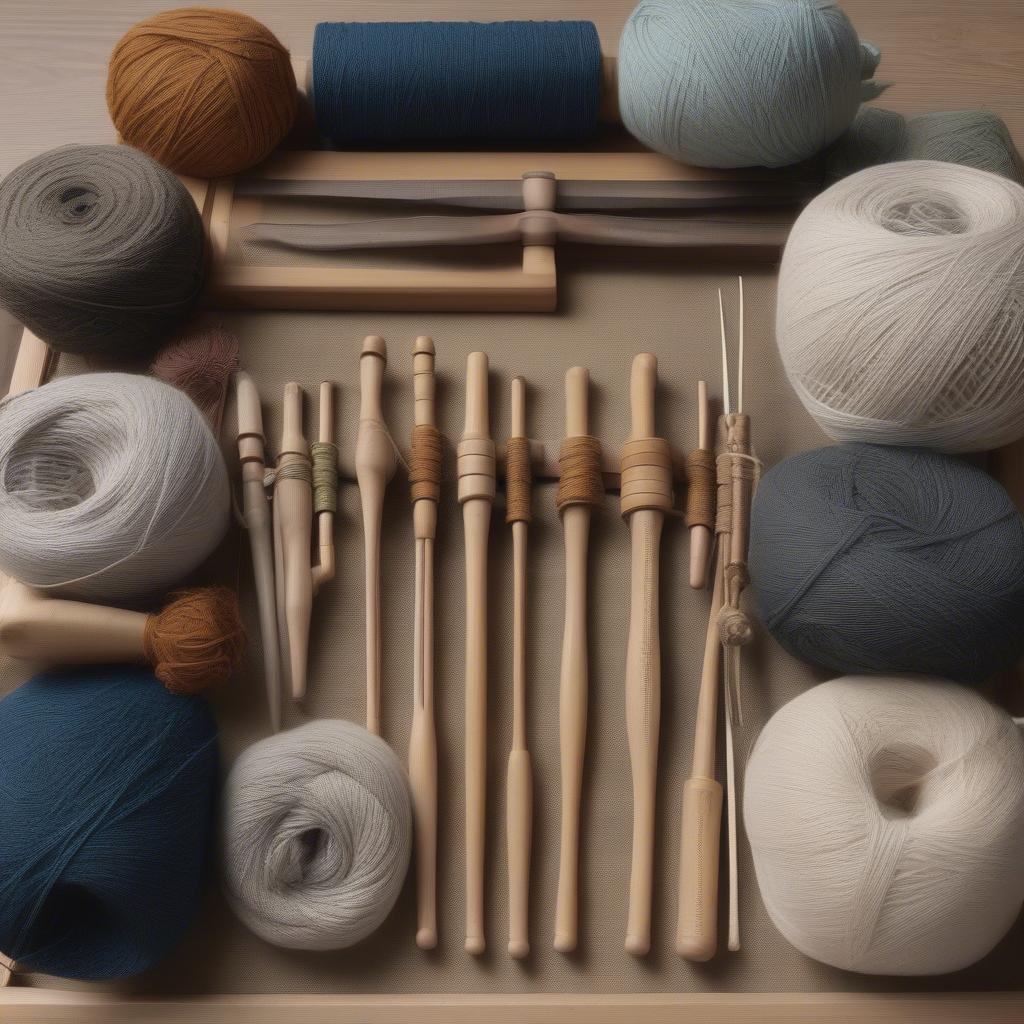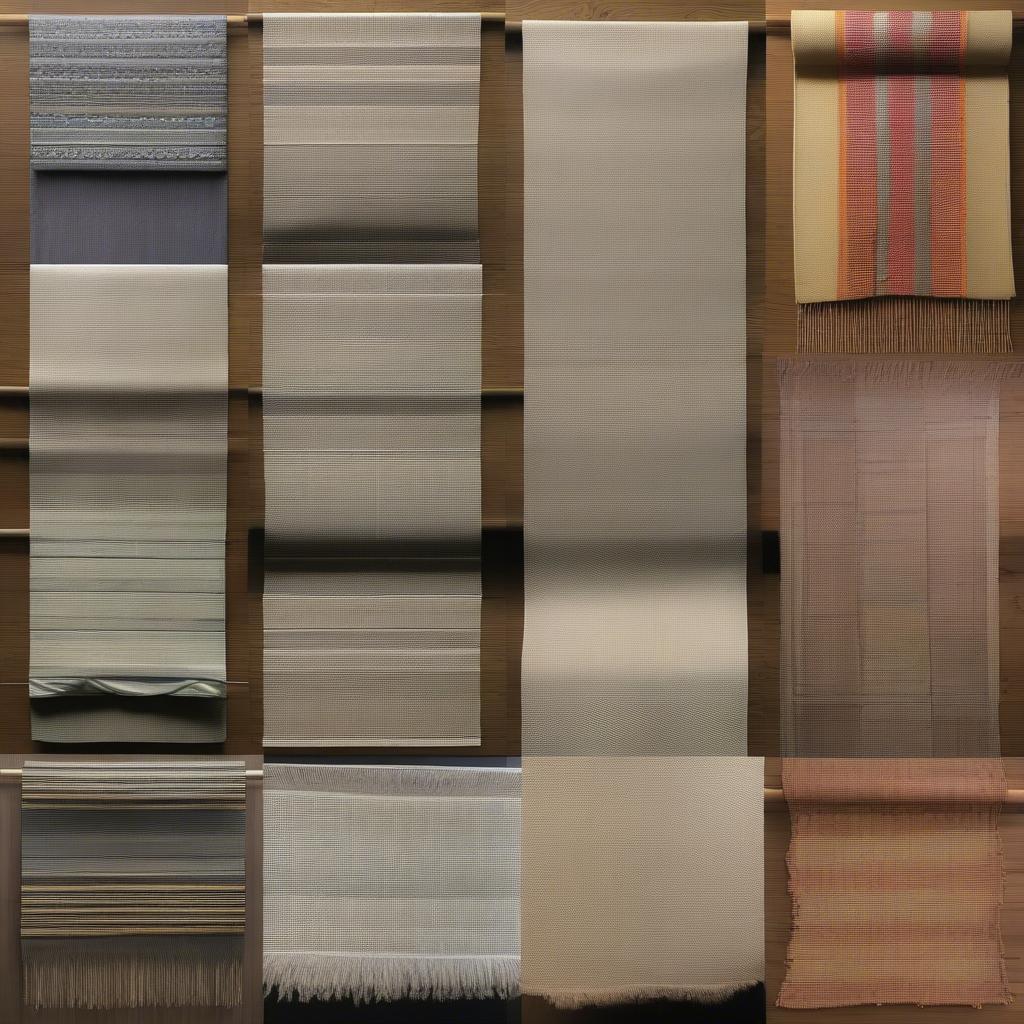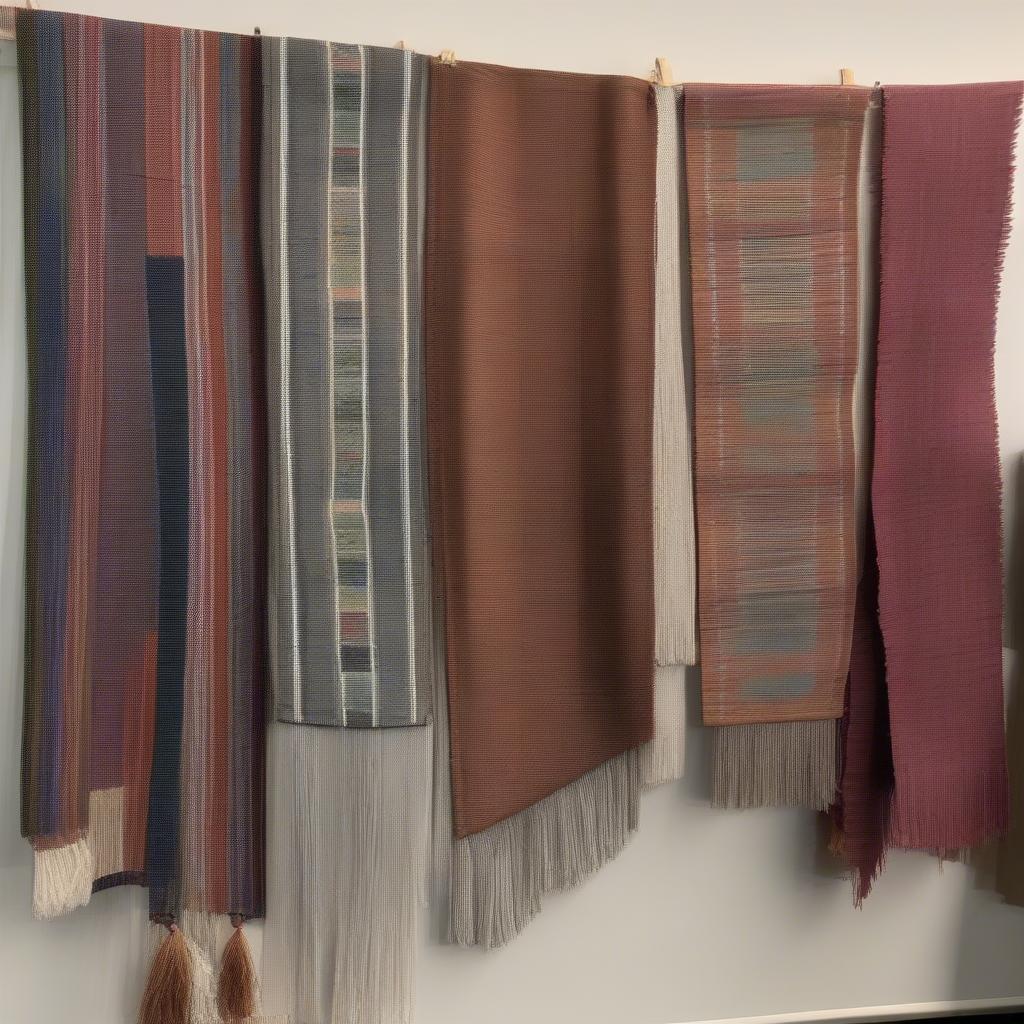Weave Table
Weaving a Table Runner: A Comprehensive Guide
Weaving A Table Runner offers a unique opportunity to blend artistry and functionality, creating a personalized piece that elevates your home decor. Whether you’re a seasoned weaver or just beginning your journey, this guide will explore various techniques, materials, and patterns to inspire your next weaving project.
Planning Your Woven Table Runner Project
Before you begin weaving a table runner, consider the following:
- Dimensions: Measure your table to determine the desired length and width of your runner. Standard runners are typically 10-14 inches wide and extend several inches past each end of the table.
- Material: Explore different yarns like cotton, linen, wool, or even silk. Consider the texture, drape, and durability of the material in relation to your table setting and lifestyle.
- Weaving Technique: From simple tabby weave to intricate patterns, the chosen technique will influence the final look and feel of your table runner. Research different weaves and choose one that matches your skill level and desired aesthetic.
- Color Palette: Select colors that complement your existing decor or create a striking contrast. Consider using a single color for a minimalist look or incorporating multiple hues for a more vibrant effect.
 Choosing Materials for a Woven Table Runner
Choosing Materials for a Woven Table Runner
Weaving Techniques for Table Runners
Several weaving techniques lend themselves beautifully to creating table runners:
- Tabby Weave: This fundamental weave creates a plain, balanced structure, perfect for showcasing the beauty of the yarn.
- Twill Weave: Twill creates a diagonal ribbed pattern, adding visual interest and texture.
- Over-Under Patterns: Simple over-under patterns can produce geometric designs, ideal for beginners looking to explore pattern weaving.
- Rigid Heddle Loom Weaving: This loom simplifies the weaving process and is ideal for creating long, narrow pieces like table runners. See our directions for weaving table runner on rigid heddle loom for more information.
 Exploring Different Weaving Techniques for Table Runners
Exploring Different Weaving Techniques for Table Runners
Choosing the Right Yarn for Weaving a Table Runner
Yarn selection plays a crucial role in the final outcome of your table runner.
- Fiber Content: Natural fibers like cotton and linen are durable and easy to care for. Wool adds warmth and texture, while silk offers a luxurious sheen.
- Yarn Weight: Choose a yarn weight appropriate for your chosen weaving technique and desired drape. Finer yarns create a delicate fabric, while thicker yarns produce a more substantial runner.
- Colorfastness: Ensure the yarn is colorfast to prevent bleeding or fading during washing.
Incorporating Patterns and Designs
Add a touch of personality to your table runner by incorporating patterns and designs.
- Geometric Patterns: Simple geometric shapes can be achieved using different colored yarns or weaving techniques like overshot. Check out our weaving pattern for a table runner for some inspiration.
- Stripes and Plaids: Create classic stripes or plaids by alternating colors in the warp or weft threads.
- Nature-Inspired Motifs: Weave leaves, flowers, or other natural elements into your runner for a touch of organic beauty. Consider weaving a weaving plant table runner for a unique touch.
“A well-chosen yarn and a thoughtfully designed pattern can transform a simple table runner into a treasured heirloom,” says renowned weaver Emily Carter.
Finishing Touches for Your Woven Table Runner
Once your weaving is complete, add finishing touches to enhance the professionalism and durability of your runner.
- Hems: Neatly hem the edges to prevent fraying and create a polished look.
- Fringe: Add fringe to the ends for a decorative touch.
- Washing and Blocking: Wash and block your finished runner to set the weave and enhance the drape.
“Don’t be afraid to experiment with different yarns, colors, and patterns,” encourages weaving instructor John Davies. “The beauty of weaving lies in the ability to create something truly unique and personal.”
 Examples of Finished Woven Table Runners
Examples of Finished Woven Table Runners
Weaving Table Runners: Conclusion
Weaving a table runner is a rewarding craft that allows you to create a functional and decorative piece for your home. By understanding the basics of weaving, exploring different techniques, and choosing the right materials, you can create a unique table runner that reflects your personal style. Browse our resources on weaving table runners for further inspiration. Perhaps you might even be intrigued by a cobblestone swedish weaving table runner.
FAQ
- What is the best loom for weaving a table runner?
- What type of yarn is best for a table runner?
- How do I calculate the amount of yarn I need?
- How do I finish the edges of my woven table runner?
- Where can I find weaving patterns for table runners?
- Can I weave a table runner with a rigid heddle loom?
- What are some common mistakes to avoid when weaving a table runner?
For further assistance, please contact our 24/7 customer support at Hotline: +84 388 951 999, located in Hanoi, Vietnam or Tech Avenue, Suite 12, San Francisco, CA 94105, USA.
